#methodology
Text
In the past I have been highly critical of the fact that so much Holocaust memory is constructed through the autobiographical/memoiric writings of men, like Elie Wiesel and Primo Levi. And I remain critical, because that male canon obscures the experiences for women.
I've understood for a while that women write for their families while men write for history, but I've finally figured out how to put words to another piece of it. Because women perceive their individual experiences to have been unimportant, or as a tiny part of a whole, their writings are much harder for laypeople to understand.
One of the most moving Warsaw Ghetto resistance memoirs I've read so far has been I Remember Nothing More: The Warsaw Children's Hospital and the Jewish Resistance by Adina Blady-Szwajger. Towards what I'm going to call the first ending of this memoir (pg. 153), she writes:
When I finished the last page of my memoirs, I went back to the beginning. I read them through-and suddenly realized that something was wrong. I had wanted to bear witness to the true events of those times, but I had done it very awkwardly. Over the last forty-five years, the world has changed, new generations have grown up, and everything that happened has faded in the mists of history ... Everything has changed - even the streets I wrote about are no longer on the map of contemporary Warsaw. So much of what I wrote has ceased to be clear and comprehensible ... We have crossed the barrier of shadows, and one by one we are leaving. The young are left behind. And it would be a good thing if something of those years remained for them. And so we need to explain, not just to reminisce. I don’t know whether I am able to. I am not a professional writer, or a chronicler. But I must try ...
This type of ambivalence towards one's right to record their memories over such a traumatic past is a typical presence in women's Holocaust memoirs, but so is the issue Blady-Szwajger so eloquently points out above: the memories recorded are niche, interpersonal; recording events and landscapes and individuals which have not penetrated collective memory, and remain obscure to laypersons. At the time, the massacre of a Ukrainian shtetl was the most memorable moment in a writer's life, but from the lens of us, as students of history, it may be a blip in the larger history of Einsatzgruppen actions at the beginnings of Operation Barbarossa.
Because male writers are much more likely to understand themselves as purveyors of history, and not simply as small, modest pieces of a collective, many of their writers include attempts to contextualize events they personally experienced within the larger history of World War II and the Holocaust. Whereas women, simply remember.
#historical methodology#holocaust diaries memoirs and autobiographies as primary sources#source analysis#methodology#holocaust history#my imaginary niche grad seminar#the seminar in my miiiiiind#the class which fills my braaaiiinnn#sorry those last two were miss saigon parody lyrics
92 notes
·
View notes
Text
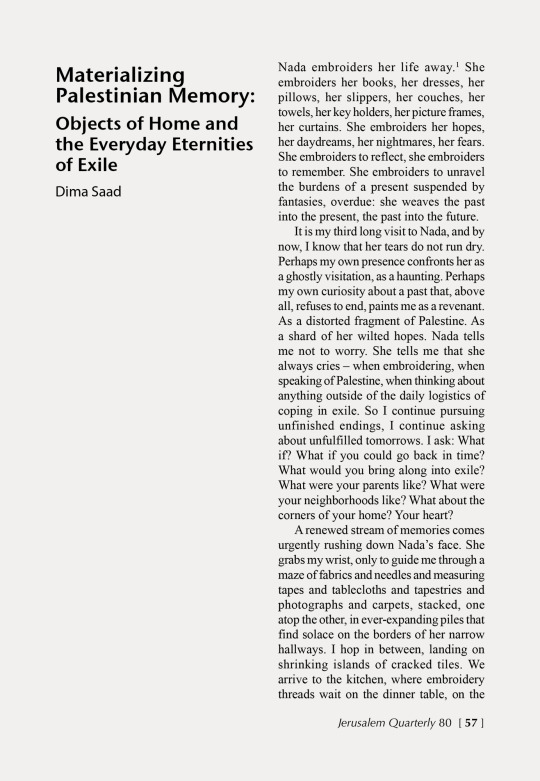
Dima Saad (ديما سعد), Materializing Palestinian Memory: Objects of Home and the Everyday Eternities of Exile, «Jerusalem Quarterly», Issue 80, Winter 2019, pp. 57-71 (pdf here) [Institute for Palestine Studies, Beirut]
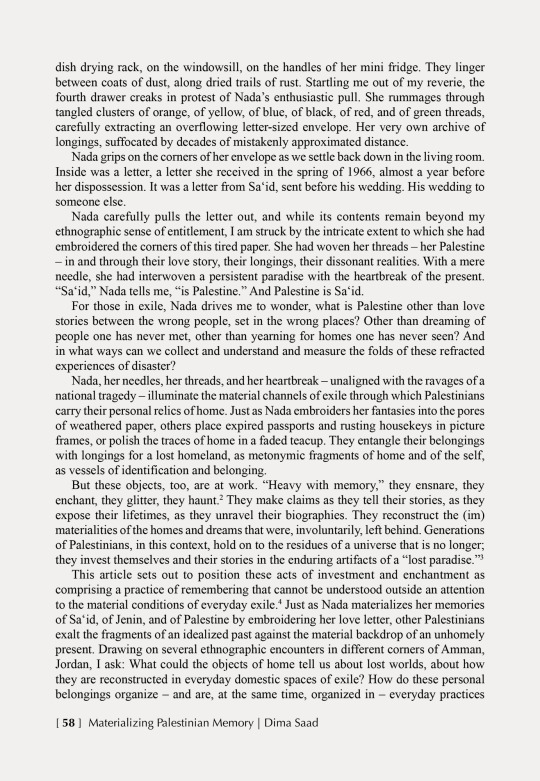




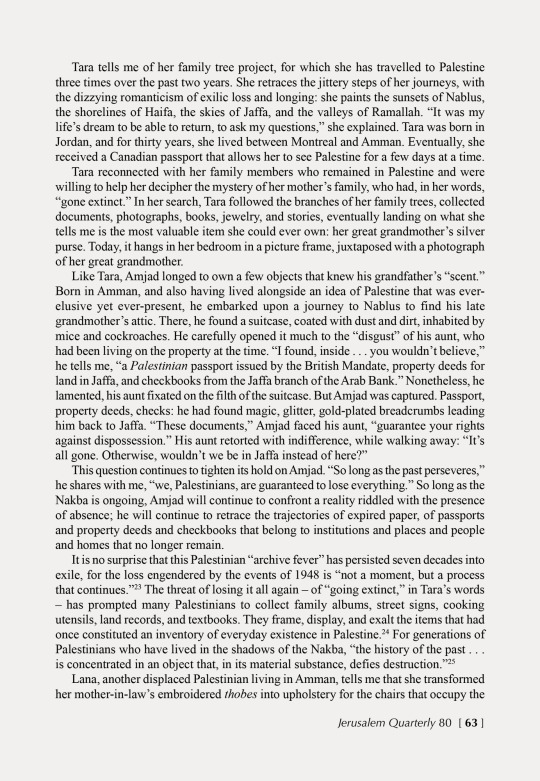






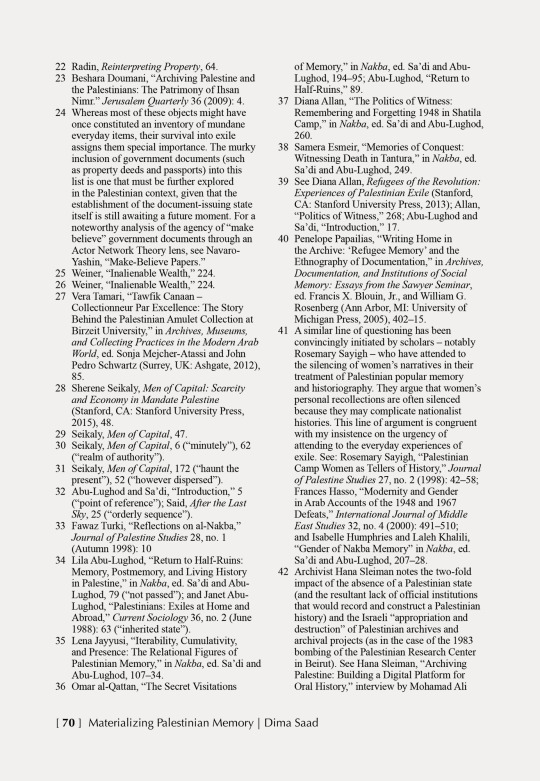

«"If we agree… that every person's world consists of several worlds" – worlds full of things, I add – then "the Nakba meant the destruction in a single blow of all the worlds in which Palestinians had lived," write Lila Abu-Lughod and Ahmad Sa'di.» – (p. 60)
#graphic design#history#historiography#ethnography#methodology#journal#dima saad#jerusalem quarterly#institute for palestine studies#2010s#ù
51 notes
·
View notes
Quote
In fact, nothing is more conservative than science. Science lays down railway tracks. And for scientists it is important that their work should move along those tracks.
Ludwig Wittgenstein, in Recollections of Wittgenstein, Rush Rhees, ed.
#philosophy#quotes#Ludwig Wittgenstein#Recollections of Wittgenstein#method#methodology#science#paradigms#norms
186 notes
·
View notes
Text
"Well," she said, "it seems to me--"
"Yes?" said Granny.
"It seems to me," Magrat tried again, "that the only magic we do is all--well, headology. Not what anyone else would call magic. It's just glaring at people and tricking them. Taking advantage of their gullibility. It wasn't what I expected when I set out to become a witch--"
"And who says," said Granny Weatherwax, slowly and deliberately, "that you've become a witch now?"
"My word, the wind is getting up, perhaps we should--" said Nanny Ogg.
"What did you say?" said Magrat.
Nanny Ogg put her hand over her eyes. Asking someone to repeat a phrase you'd not only heard very clearly but were also exceedingly angry about was around Defcon II in the lexicon of squabble.
Terry Pratchett, Witches Abroad
#magrat garlick#granny weatherwax#esme weatherwax#nanny ogg#witches abroad#discworld#terry pratchett#witches#magic#methodology#argument#female friendship#coworkers#expectations#headology#seems to me#what did you say#defcon ii
298 notes
·
View notes
Text


53/100 days of productivity •29/02/2024
• went to work - 8 a.m to 6p.m
• Duolingo : Portuguese
• mails
• methodology : research qualitative
• digital humanities
• preparation for work
• English
#100 days of productivity#studyblr#study motivation#studying#online school#university#working student#online university#study blog#study inspiration#portuguese#english#methodology
13 notes
·
View notes
Text
"
Introduction
Whether you’re aware of it or not, your engagement with Historical European Martial Arts is informed by a methodology. That is, the kinds of questions raised by our collective exploration of written sources related to swordplay have to be answered by historical inquiry. Historical inquiry can’t help but have a methodological construction, even if the person making the inquiry is unaware of it. Methodology is, pretty simply, the use of particular tools of analysis related to the goals of the analysis. To a historian, the goal of an analysis is to answer a historical question. For a historical fencer, the goal is likely something much more general.
The following article proposes a basic outline of the methodological approaches that are most visible among people in the HEMA community, whether they are individual fencers, club leaders, scholars, or otherwise. This outline is meant to be a tool and resource for fencers looking to make their practice and inquiry more meaningful. None of the following approaches or goals are considered more or less important than any other."
An excellent article that aims to simply describe some of the methodologies in the historical fencing community, or as Brian Puckett wrote "
his schema is intended to be “descriptive,” not “prescriptive” - aiming not to lay down
recommendations for how fencers should approach their hobby, but to provide a framework to
understand how people actually do approach their hobby." in his article 'Goals and Methodologies of Source-Use in Historical Fencing and Martial Arts' which you can find here.
Both articles found here in the HEMA World Domination facebook group.
21 notes
·
View notes
Text
My Personal Methodology for Divination Reading
I will start by saying that every individual is different, and so the methods for one person almost certainly won't ring true for all people, but I'm going to do my best to cover what I believe are the most important aspects of my own divination methods.
1. My Tools are Only Tools
While I care deeply about the quality and care of my divination tools (my rune and ogam sets) at the end of the day they are mearly the tools I use to see the 'tapestry' of the future, or present in some cases. My tools may work a little differently (my ogam tends to lean more towards the emotional aspects of situations and speak in a more poetic fashion, while my runes tend to be pretty blunt and more straight forward) I don't personify them. THEY are not telling me what I'm reading, they are just the means by which I'm able to read.
2. Context is Key
Context when reading is absolutely EVERYTHING. The same stave could have dozens of different interpretations depending on the context of whats around it and the same 6 staves could have a dozen interpretations in the context of an individuals life. A reading discussing the persons ability to nurture and need to learn quickly could apply equally well to someone about to become a parent or someone entering a helping profession. Context is EVERYTHING.
3. Intuition is just as Important as Memorization
People tend to spend a lot of time and energy on memorizing the 'textbook' meanings of each tool that they're using. This is important because obviously you need to be able to speak the language of your tools in order to translate their meanings but I have been preforming divination for 10+ years and I ALWAYS have a quick reference on hand because KNOWING what is being said is more important practically than having the book meanings memorized. This idea feeds back into context, because a staves true meaning in a reading is based on the context of the staves around it and no book can account for all possible contexts.
#divination#ogham#ogam#runes#tarot#blackcrowing#methodology#divination methods#divination methodology
9 notes
·
View notes
Text
Class Feature Friday: Forensic Medicine Methodology (Pathfinder Second Edition Investigator Methodology)
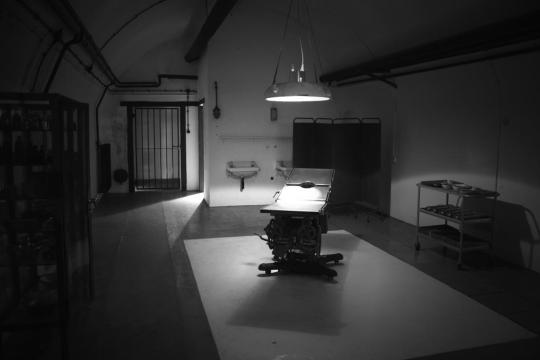
(photography by drop-the-dagger on DeviantArt)
It is gristly work, but there is much that a body can tell us about the events that lead to their death if we know what to look for. Such is the basis of forensic medicine, and therefore, the subject we are looking at today.
The exact shape and results of a wound can tell the investigator what sort of weapon was used to make it, as well as anything unusual about it, while the presence of carrion insects can tell a lot about the time of death, and small marks and wounds might tell more about the exact circumstances that led to the deceased entering their current state. Imagine how this is extrapolated in a fantasy universe where a victim might show signs of unusual necrosis from a necromantic wound, or how they might show signs of extreme fright from a phantasmal killer spell, and so on.
While other investigators may be called in to examine the evidence of any sort of crime, today’s subject is almost exclusively expected to be investigating scenes of murder and death. However, their keen eye for detail can be used elsewhere, and their medical knowledge can also benefit the living. Such is the nature of their chosen profession.
In any case, this methodology might not have any fancy tricks like their counterparts, but with a little creativity and love of investigation fiction, it can be a perfect way to add some fun flavor to investigating, giving clues to upcoming foes.
With their training, these investigators have a knack for gaining additional details from examining cadavers. What’s more, they’re trained in medical practices, and able to heal themselves and others much more regularly through completely mundane methods.
That may be fairly basic, but there is one feats out there specifically tied to this methodology: Scalpel’s Point, which lets them use their knowledge of anatomy to strike for their foe’s arteries to cause bleeding.
Of course, other feats might prove useful for them as well, such as Flexible Studies, Known Weaknesses, That’s Odd, Ongoing Investigation, Connect the Dots, Predictive Purchase, Thorough Research, Whodunnit?, Reason Rapidly, Strategic Bypass, Reconstruct the Scene, and Just the Facts, though obviously some may be more useful to you depending on your build.
While not as flashy as other methodologies, being able to gain information specifically from the dead can be quite useful. What’s more, it’s unobtrusive, letting you dictate most of the rest of the build based on your own preference as well!
It’s a long-running trope that coroners and others that examine the dead tend to be… eccentric, to say the least. Often talking to the deceased or behaving in strange but otherwise harmless ways. If that fits what you’re going for with your character, then go for it, but don’t feel forced into it. Also remember that often in real life, forensic science is not always the foolproof method they portray it as in certain shows.
Exceptionally old for even a ghoran, Tender has watched friends grow up and die, while their own cycle of rebirth only briefly has interruptions. This has given them a fascination with the state of a body after death, which they’ve channeled into their investigative pursuits to bring murderers to justice.
A common method of disposing of bodies in the Red City is to feed them to the khefaks, a species of mineral-eating arthropods. However, the half-eaten body discovered in the pits shows signs of radiation poisoning, suggesting they were still alive when the radioactive specimen consumed them. Now the investigation turns to identifying the body and the sadist that doomed them to such a fate.
A recent string of serial murders has the city in an uproar, the only connecting factor being the method. The victims literally have their hearts ripped out by violent force, as if by an impossibly strong hand. Some has suggested a warrior bolstered by some potion of strength, while others think it might be some powerful wizard’s construct. Finding the truth will mean combing each killing for evidence.
#pathfinder second edition#investigator#methodology#forensic medicine#ghoran#khefak#Advanced Player's Guide
8 notes
·
View notes
Text
The Classics of Fan studies: Matt Hills - Fan Culture
The classic of fan studies I want to introduce today is a theoretical overview of the discipline from 2002. Indeed, in Fan Culture, Matt Hills explores the different theories of fan culture and the methodologies that had been used by scholars before him.
I particularly like the first chapter in which Hills challenges the idea that there is a dichotomy between passive consumers and resistant fans:
“Conventional logic, seeking to construct a sustainable opposition between the ‘fan’ and the ‘consumer’, falsifies the fan’s experience by positioning fan and consumer as separable cultural identities.”
In this chapter, he demonstrates that fans are also consumers and that depicting them as a separate group ignores the complexities and multiplicities of fandom.
While I found this book compelling, I would only recommend it to people who have read some fan studies works already as it might be a bit complex as a first introduction to the subject. However, if you are interested in fan studies theory and methodology, this is the book for you!
19 notes
·
View notes
Text
Etymological Map of America
— Alex | Vivd Maps
America’s rich tapestry of stories is woven into the fabric of its landscape, with many tales embedded in the place names of the cities and states. Understanding the meanings behind these names offers insights into the development of the land, its history, and its culture over the centuries. Not only does this deepen our appreciation of our surroundings, but it also enriches our vocabulary and occasionally aids in solving crossword puzzles, a sentiment strongly endorsed by WordTips.
Take, for example, Missoula, which translates to “River of Ambush” in Montana, evoking memories of inter-tribal conflicts. Similarly, Manchester, New Hampshire, derives its name from “Breast-like Hill,” harking back to the voluptuous mound upon which a Roman fort was constructed around 79 CE in Manchester, UK. Centuries later, Samuel Blodget, inspired by the barge canals of the British Manchester, spearheaded the construction of similar waterways in his New Hampshire town and suggested adopting its namesake.
But what about the rest of the U.S.? Armed with our etymology hats, we delved into dictionary country, scouring sources such as the Bureau of Indian Affairs, the Online Etymology Dictionary, the Encyclopedia Britannica, the American Library Association, and regional news reports. Our quest uncovered the literal meanings behind the names of each U.S. state, its capital city, and 178 of America’s largest cities.
Literal Translations of State Names and Their Capital Cities Across the U.S.
Names sometimes transcend boundaries. Both the state of Kansas and Kansas City, MO, derive their names from the Kansas River, which, in turn, honors the Kanza tribe, translating as ‘People of the Southwind.’
Interestingly, there exists a lesser-known Kansas City within the state of Kansas itself. This city adopted its name from its Missouri counterpart, hoping to leverage the fame of the Missouri town. According to local history teacher Matt Beat, “KCK wanted to capitalize on the success of KCMO and essentially mislead visitors into believing they were in the authentic Kansas City.
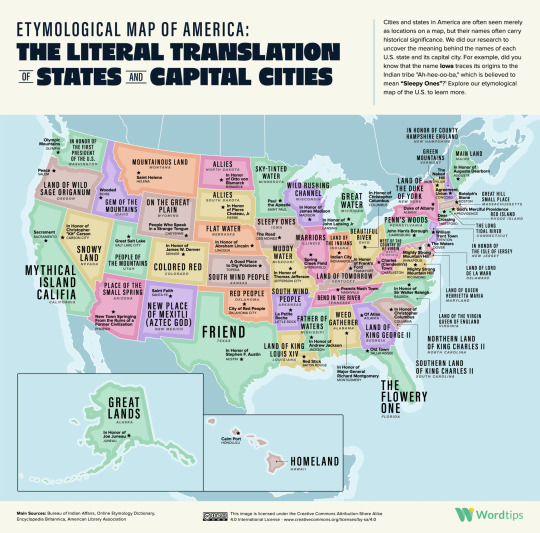
While numerous state names honor Native history or describe geographical features, others carry traces of colonial influence. The Carolinas, for instance, owe their name to King Charles II and his father, Charles I. The territory was initially chartered by Charles II, who bestowed the name in honor of his father. Additionally, the capitals of both Carolinas pay homage to European explorers, with Sir Walter Raleigh and Christopher Columbus lending their names to these cities.
The Literal Translation of Major City Names in the Northwestern U.S.
In addition to the straightforward meanings of city names like ‘Anchorage’ (a place suitable for anchoring) and ‘Portland’ (land surrounding a harbor), the Northwestern U.S. boasts some lesser-known etymologies, both of Native and settler origin.
Honolulu, for instance, derives from the Hawaiian language: ‘hono’ meaning ‘port’ and ‘lulu’ meaning ‘calm.’ Interestingly, the name traces back to British Captain William Brown, who initially named the port Fair Haven upon his arrival in 1794. Before this, Hawaiians referred to the area as Ke ʻAwa O Kou, meaning ‘the harbor of Kou.’
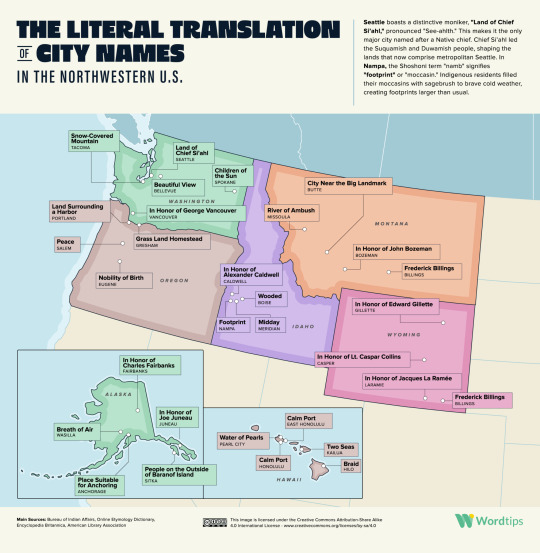
Meanwhile, Boise, Idaho, takes its name from the French word for ‘wooded area.’ However, the name’s origins are influenced by English as well: fur traders passing through the region called it the Wooded River, a name later translated by French trappers.
When surveying the area in the 1830s, the French United States Army officer B.L.E. Bonneville had the final say, choosing French over English.
The Literal Meanings Behind Major City Names in the Southwestern U.S.
Many major cities in the Southwestern U.S. bear names that honor notable individuals. Reno, for instance, pays tribute to Jesse Lee Reno, a Virginia-born Union general who met his demise during the battle of Fox’s Gap. The official announcement regarding the city’s naming stated:
“The name of the new town on the C.P.R.R. at the junction of the contemplated branch road to Virginia City in Nevada, is Reno, in honor of General Reno, who fell gloriously fighting in defense of the flag against the assault of traitors in rebellion.”
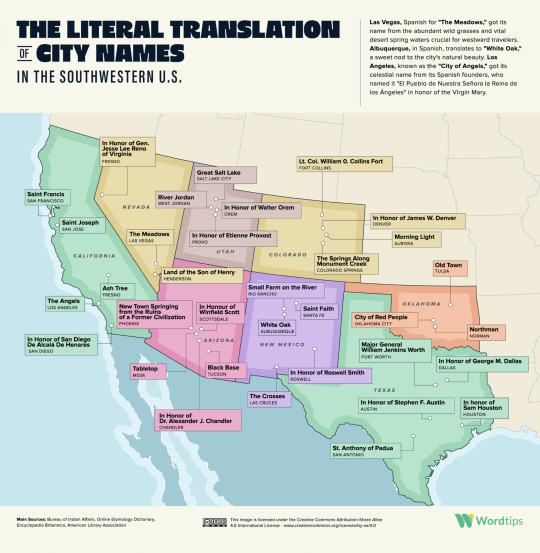
Similarly, Orem, Utah, derives its name from Walter Orem, a prominent figure in mining and railroad development who constructed the state’s inaugural electric railroad. However, the town’s naming was more an act of flattery than gratitude towards Orem’s contributions. In 1919, as the town faced a critical juncture in its expansion efforts, requiring investment for incorporation and the establishment of a networked water system, it was named after Orem in hopes of securing his support. Prior to this, the area had been known as Provo Bench.
The Literal Meanings Behind Major City Names in the Southeastern U.S.
In September 1687, Henri Joutel noted in his writings: “We arrived at the said place called Chicagou which, according to what we were able to learn of it, has taken this name because of the quantity of garlic which grows in the forests in this region.”
Other accounts suggest that the name Chicago may have originated from the Algonquian word sheka:ko:heki, meaning “place of the wild onion,” or possibly from the Ojibwa word for skunk. Regardless of its precise origins, it appears that odor was a prominent characteristic of the area before the establishment of the town of Chicago in 1833.
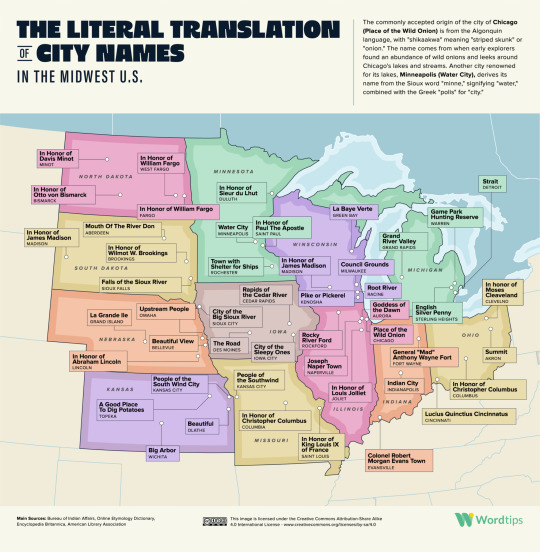
Topeka, on the other hand, translates from the Kansa (Siouan) language as “A Good Place to Dig Potatoes.” The founders chose this name in 1855 with originality in mind. Fry W. Giles, a banker and city founder, described Topeka as “a name not found in the list of post offices of the United States, nor in any lexicon of the English language. It was novel, of Indian origin, and euphonious of sound.”
The Literal Meanings of Major City Names in the Southeastern U.S.
Understanding that Baton Rouge means “red stick” doesn’t require fluency in French. But why was Louisiana named “red stick”? In 1699, French explorer Pierre Le Moyne d’Iberville stumbled upon the area and spotted a reddened pole adorned with sacrificial fish and bear heads by the Native inhabitants. This visual left an impression on d’Iberville, leading him to refer to the area as Baton Rouge when the French colonized it.

Among the most intriguing place names in the study is Memphis. The city took its name from the ancient Egyptian city of Memphis, which translates to “enduring and beautiful” or “Place of Good Abode,” depending on interpretation. The founders, John Overton, James Winchester, and Andrew Jackson, were less concerned with etymology; they chose the name because both cities stand beside vast rivers.
The Literal Meanings Behind Major City Names in the Northeastern U.S.
Some city name translations in the Northeast are well-known or easy to understand, such as Philadelphia (from the Greek for “brotherly love”) or Portland (the land around a port). Others require a bit more digging.
Would you be able to identify the city name that translates to Botolph’s Stone if it wasn’t labeled on our map? Boston was named after a town in Lincolnshire, England, which, in turn, was named after Botolph, the patron saint of travelers. The second part of the name could derive from “stone” or perhaps from “tun,” the Old English word for village.
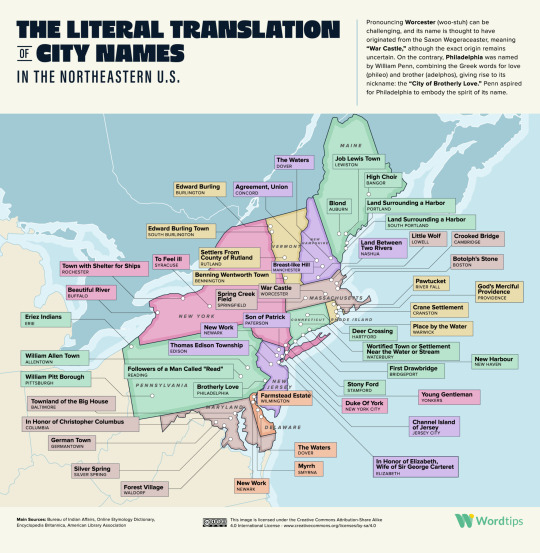
The Dutch colonized New Netherland, which included parts of present-day New York City, Long Island, Connecticut, and New Jersey, with the city of New Amsterdam located on today’s Manhattan Island.
However, in 1664, James II of England, the Duke of York, captured the island, leading to the city receiving its eventual name.
If that sounds odd and European, remember the city was briefly called New Orange when the Dutch briefly recaptured it in 1673.
Methodology:
The WordTips team compiled research from a diverse array of sources, including the Bureau of Indian Affairs, the Online Etymology Dictionary, the Encyclopedia Britannica, the American Library Association, historical records, and regional news reports. The aim was to unveil the literal meanings behind the names of each U.S. state, their respective capital cities, and 178 of the most populated cities scattered across the country.
The investigation delved into various aspects of etymology, considering cases where a state or city was named after a person or significant event, where the words in a location’s name evolved in meaning from an earlier version of English or another language, or according to the significance behind another location after which a U.S. state or city was named.
This project’s research was concluded in January 2024.
3 notes
·
View notes
Text
H: What do you hope anyone interested in approaching plants as material sources for art will first consider and reflect upon?
EI: I hope people will keep in mind processes of gratitude and respect — of mutual exchange, rather than of taking to satisfy a material need. This can look many ways. Maybe even just asking yourself a few questions before harvesting: Who else might be in relation with this plant, human or more-than-human? What is the plant doing here and why? How long has this plant been here, will they be here tomorrow, or in 100 years? While I understand the stance of taking as much as possible of a plant considered invasive in some contexts (in order to control the spread or reduce the population), that is not the orientation of this project or my work. I’m more interested in getting to know the plants I work with, and attempting to understand their naturalcultural status, and then considering what we might call a “harm reduction approach” that has a plan for healing. Rip a weedy plant out, you’ll leave a wound, and more will emerge in their place unless you’ve got a careful and considered (and often labor-intensive!) healing plan in place that will nurture the plant community you hope to see — while hopefully nurturing you as well!
Ellie Irons, interviewed by Hyperallergic. "10 Questions for an Artist Who Grows Her Own Pigments." [x]
19 notes
·
View notes
Text

Plato, Phaedrus, 265D[-E], in Christopher Alexander, Notes on the Synthesis of Form, Harvard University Press, Cambridge, MA, 1964
«First, the taking in of scattered particulars under one Idea, so that everyone understands what is being talked about… Second, the separation of the Idea into parts, by dividing it at the joints, as nature directs, not breaking any limb in half as a bad carver might.»
– Plato, Phaedrus, 265D[-E]
#graphic design#architecture#urbanism#mathematics#set theory#graph theory#complex systems#complexity theory#methodology#notes on the synthesis of form#book#christopher alexander#platone#plato#pattern language#harvard university press#1960s
15 notes
·
View notes
Quote
Philosophers constantly see the method of science before their eyes, and are irresistibly tempted to ask and answer questions in the way science does. This tendency is the real source of metaphysics, and leads the philosopher into complete darkness.
Ludwig Wittgenstein, The Blue Book
#philosophy#quotes#Ludwig Wittgenstein#The Blue Book#metaphysics#science#scientism#methodology#error#mistakes
123 notes
·
View notes
Text
All the OTHER aspects of the repilication crisis aside, all psych studies face two major problems:
people know they're being observed and react to being observed which makes it hard to observe "authentic" behavior
roleplaying/acting is fundamental to humans(it's how they learn to be human, afterall), which means most ppl will try to "win" at being in a study if they know they're in a study(something both normal to want and possible to attain u_u), which will skew your results
I don't think psychology and sociology have really come up with a good solution to these problems yet.
#Psychology#Sociology#Methodology#Studies#zA Thinks#zA Opinions#zA Posts#Humans#Human Behavior#Observation#Roleplay
9 notes
·
View notes
Text


17/100 days of productivity • 24/01/2024
That was a productive day !! Still tired but I manage to do so much more ! :)
• mails
•work meeting !
• drivers licences lessons + study the question
• Duolingo: Portuguese + Japanese
• 30 min workout
• methodology
• espitemology
• lots of reading on diverses subjects in pedagogy
• history
• French
#100 days of productivity#studyblr#study tips#studying#study motivation#online school#university#working student#online university#study blog#study inspiration#portuguese#english#french#methodology#philosophy#productivity#motivation to study#getting my shit together#working with kids
10 notes
·
View notes
Text
"This article's central topic is methodology, and it covers an in-depth examination of different methods for grouping multiple sources together while also trying to strictly follow their advice. It explores this topic in more detail than is needed for someone whose goals are simply “to get started with fencing.” However, it may be relevant to people who want to take a close look at certain source-facing aspects of historical fencing and martial arts, such as instructors, researchers, source-minded fencing students, and anyone working to interpret historical sources to develop a training program. "
A very detailed long form article on goals and methodologies, building on the related post methodology in hema by Adam Franti
For anyone who hasn’t yet seen the following links:
.
.
.
.
Some advice on how to start studying the sources generally can be found in these older posts
.
.
.
.
Remember to check out A Guide to Starting a Liberation Martial Arts Gym as it may help with your own club/gym/dojo/school culture and approach.Check out their curriculum too.
.
.
.
.
Fear is the Mind Killer: How to Build a Training Culture that Fosters Strength and Resilience by Kajetan Sadowski may be relevant as well.
.
.
.
.
“How We Learn to Move: A Revolution in the Way We Coach & Practice Sports Skills” by Rob Gray as well as this post that goes over the basics of his constraints lead, ecological approach.
.
.
.
.
Another useful book to check out is The Theory and Practice of Historical European Martial Arts (while about HEMA, a lot of it is applicable to other historical martial arts clubs dealing with research and recreation of old fighting systems).
.
.
.
.
Trauma informed coaching and why it matters
.
.
.
.
Look at the previous posts in relation to running and cardio to learn how that relates to historical fencing.
.
.
.
.
Why having a systematic approach to training can be beneficial
.
.
.
.
Why we may not want one attack 10 000 times, nor 10 000 attacks done once, but a third option.
.
.
.
.
How consent and opting in function and why it matters.
.
.
.
.
More on tactics in fencing
.
.
.
.
Open vs closed skills
.
.
.
.
The three primary factors to safety within historical fencing
.
.
.
.
Worth checking out are this blogs tags on pedagogy and teaching for other related useful posts.
.
.
.
.
And if you train any weapon based form of historical fencing check out the ‘HEMA game archive’ where you can find a plethora of different drills, focused sparring and game options to use for effective, useful and fun training.
.
.
.
.
Check out the cool hemabookshelf facsimile project.
.
.
.
.
For more on how to use youtube content for learning historical fencing I suggest checking out these older posts on the concept of video study of sparring and tournament footage.
.
.
.
.
The provoker-taker-hitter tactical concept and its uses
.
.
.
.
.
Consider getting some patches of this sort or these cool rashguards to show support for good causes or a t-shirt like to send a good message while at training.
9 notes
·
View notes